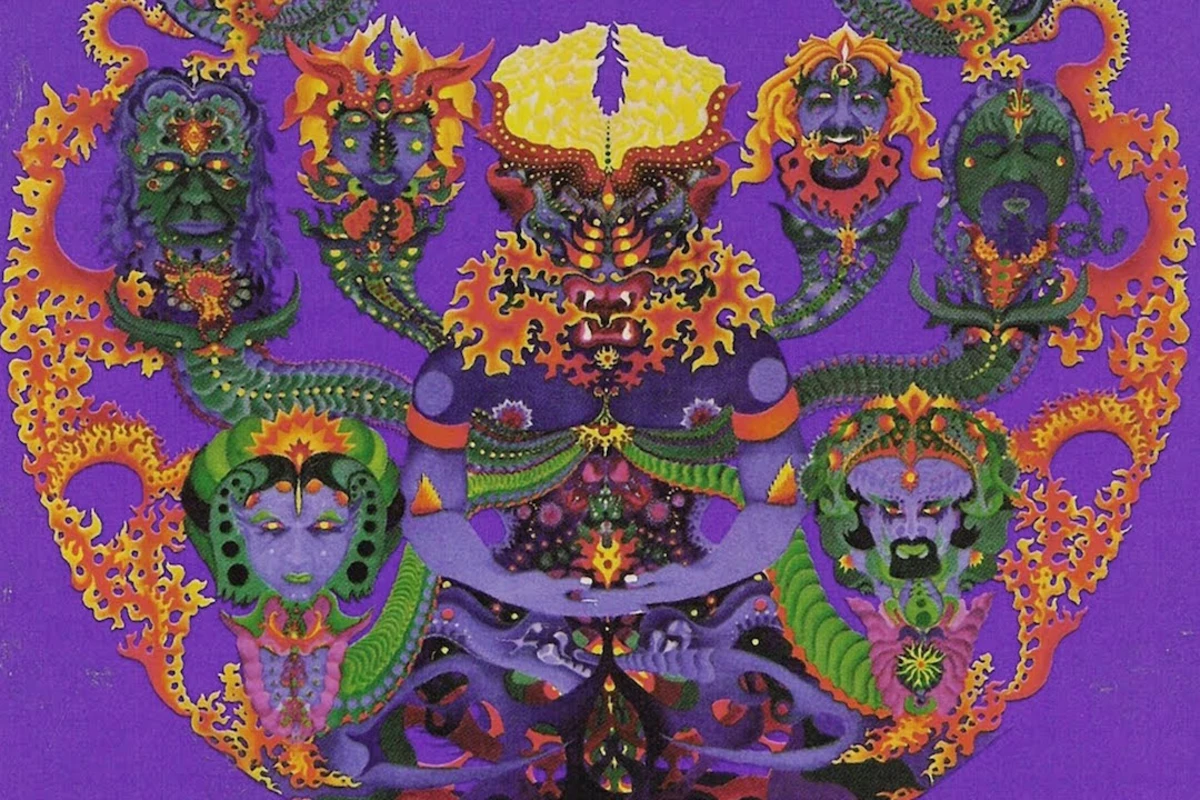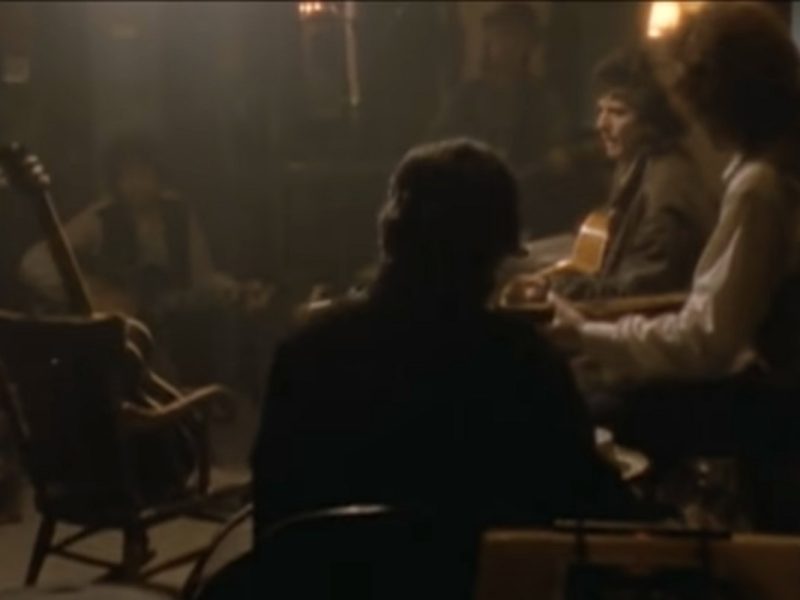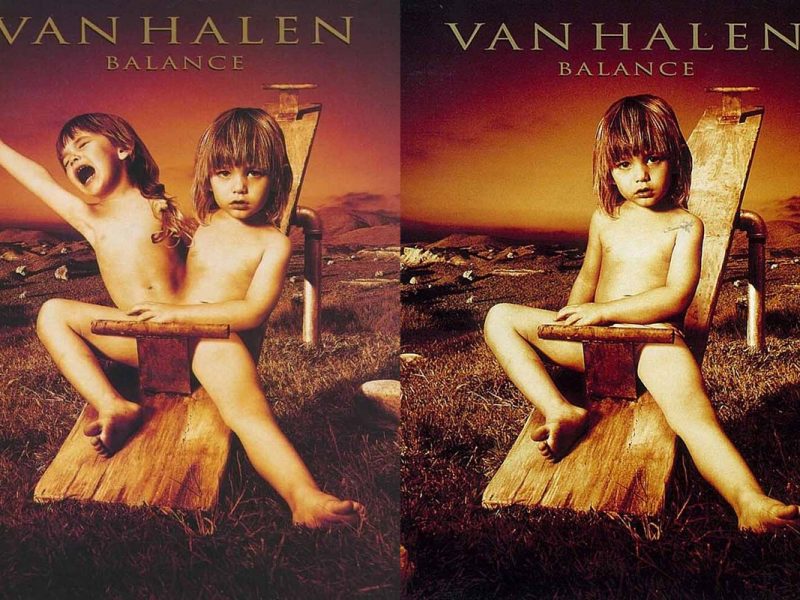The Grateful Dead’s self-titled debut album from 1967 was a casserole of folk, rock, blues and psychedelia. But it didn’t quite capture the live experience. So the Grateful Dead set out to bring their celebrated concert sound into the studio on Anthem of the Sun, which was released on July 18, 1968.
They traveled south to Los Angeles in November 1967 to begin work on this second album. By this time, the effects of the Beatles’ Sgt. Pepper’s Lonely Hearts Club Band had legitimized rock ‘n’ roll as a serious art form. The Grateful Dead wanted to see how far they could push this.
In the documentary Anthem to Beauty, Jerry Garcia says that the band’s contract gave them unlimited studio time, an unheard-of provision back then. “Our strategy was, we wanna play in the studio, we wanna learn how the studio works,” he said. “What we did essentially was we bought ourselves an education.”
Warner Bros. Records exec Joe Smith also recalled the sessions: “These guys came along … went in the studio, experimenting with sound like kids in a candy store. Whatever was state-of-the-art, they were availing themselves of it.” Producer and engineer Dave Hassinger, who had worked on the Dead’s debut, was brought in for Anthem, but as Smith pointed out, there was a new “element of chemicals involved. These guys were stoned part of the time, living in a fantasy world and looking for sounds that may not even be possible.”
The sessions continued on and on as Hassinger grew more and more frustrated with the band, which had no finished songs or direction. They eventually moved to New York, and Hassinger bailed. The Grateful Dead were thrilled – the project was now all theirs.
“Anthem of the Sun was our vehicle,” drummer Mickey Hart recalled. “It was our springboard into weirdness. Now we’re not tethered by the engineers or the technology of the day, we can fly the lofty peaks. And of course, we knew nothing of the studio. It was startling, it was new, it was invigorating, it was the edge.”
The idea was to weave studio and live recordings into a seamless entity. Different performances of the same song, recorded on different nights, somehow melded together, then merged with studio takes, like one big sugar-cubed puzzle.
Listen to the Grateful Dead Perform ‘New Potato Caboose’
Both sides of the album run as continuous pieces, and the LP’s final mix was almost like a performance itself, with the mix made as the tape was rolling. “Using musical jump cuts, mixes and cross-fades, Anthem incorporated many of the techniques of cinema,” said bassist Phil Lesh.
Highlights are plenty. “That’s It For the Other One” is a dramatic piece with four distinct sections unfolding into a tripped-out psychedelic blur colored by Garcia’s killer guitar work. The shimmering mellow of “New Potato Caboose” is sheer beauty, pointing toward a direction the band would soon follow.
“Born Cross-Eyed” wraps up side one in an aggressive burst of pure rock ‘n’ roll led by Bob Weir. Time changes, stop-starts, blistering guitar and sweet harmonies drive it home, and just when you think you’ve got it figured out, a Herb Alpert-style trumpet blares in amid the late Ron “Pigpen” McKernan’s swirling organ.
The song first appeared as the flip side to the band’s “Dark Star” single, probably the most concise song to emerge from this era of sessions. Ironically, the song was dragged to marathon lengths onstage. “Alligator” and “Caution (Do Not Stop on the Tracks)” wrap up the album by wandering into even more free-form terrain, as the band tries its best to replicate part of its live experience.
“Anthem of the Sun was like a chance for us to try a lot of things, to see what things might work and might not,” said Garcia. “Actually, when we mixed it, we mixed it for the hallucinations. Phil and I performed the mix as though it were an electronic music composition. It was pretty intense, and we performed each side all the way through.”
Still, Garcia was unhappy with the way the album turned out, and in 1972 he remixed it for a more conventional listen. (The original mix remained unavailable until it was included on a vinyl box in 2012.) Anthem barely dented the Top 100, crawling up to No. 87, but topping the charts was never the band’s intention or strong point.
Even if this album may not be the band’s best studio work, it could be its most interesting recording. At the very least, Anthem of the Sun would provide the map for future Dead adventures. By the time they made their next album, Aoxomoxoa, the Grateful Dead had a clearer vision of their definitive sound.
Top 25 Psychedelic Rock Albums
Blues, folk, world music – no genre escaped the kaleidoscopic pull of the ’60s’ trippiest sound.
A Grateful Dead Member Is Part of Rock’s Tragic ’27 Club’



